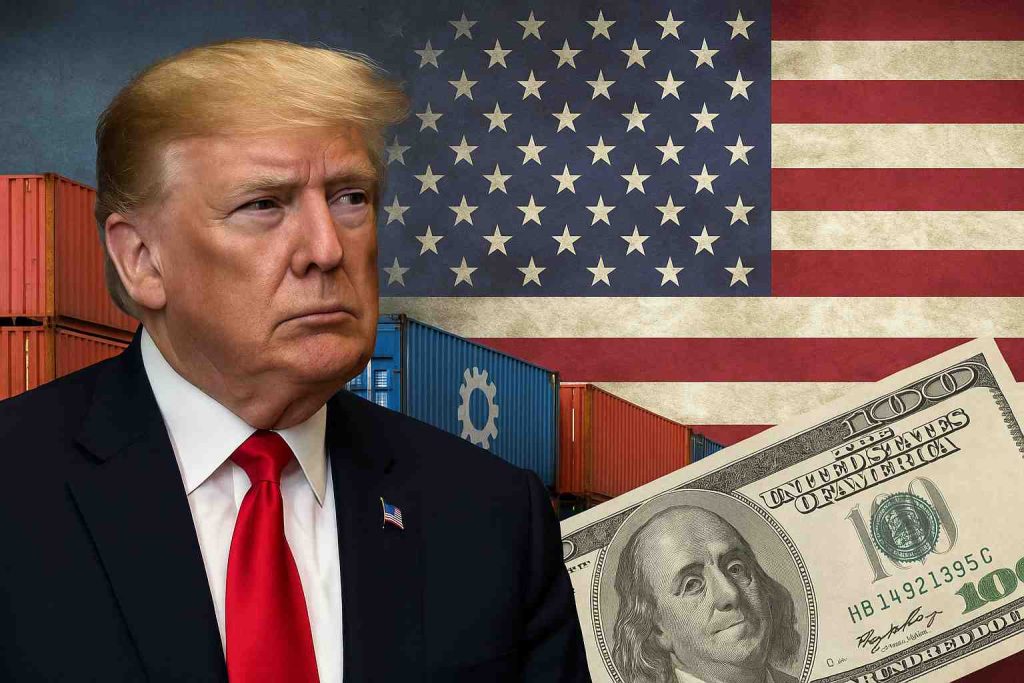Trade tariffs have long been a tool utilized in international trade to protect domestic industries. During the Trump administration, these policies took center stage, reshaping the landscape of the U.S. economy. The emphasis on tariffs aimed to curb trade imbalances and boost local manufacturing. However, such measures also introduced the risk of stagflation, posing challenges to sustainable growth and economic stability.
The interplay between tariffs and inflation created an economic environment ripe for stagflation—characterized by sluggish growth, high unemployment, and rising prices. This set the stage for an intricate economic scenario, where understanding the nuances of these policies became crucial. As we delve deeper into this topic, it’s essential to explore how trade measures under Trump have influenced the broader economic terrain.
The impact of trade tariffs on the U.S. economy

The imposition of trade tariffs under the Trump administration significantly impacted domestic industries and the broader U.S. economy. By introducing higher tariffs on imported goods, the intent was to encourage local production and reduce dependency on foreign products.
However, the reality presented a mixed bag of outcomes. While some industries did see a temporary boost, many others faced increased production costs due to higher prices on imported raw materials. The short-term gains achieved in certain sectors were offset by long-term challenges, creating an unpredictable economic environment.
Short-term gains versus long-term economic challenges
In the immediate aftermath of trade tariffs implementation, several U.S. industries experienced a surge in demand for domestically produced goods. This initially appeared promising as it suggested a revival in local manufacturing. Yet, beneath the surface, the situation was more complex and charged with economic intricacies.
The heightened tariffs led to increased costs for industries reliant on imported inputs, such as automotive and electronics, who struggled under the weight of additional expenses. Consequently, producers passed these costs onto consumers, fueling inflation. This delicate balance between short-term gains and enduring inflationary pressures underscored the complications of such economic strategies.
Addressing the risk of stagflation
As stagflation loomed, policymakers and economists explored options to counteract its effects without stifling growth. Achieving this equilibrium required innovative solutions that mitigated risks while fostering a stable economic climate.
Addressing stagflation necessitated a layered approach involving fiscal policy adjustments and strategic economic planning. These measures aimed to sustain employment levels while curbing inflation, thereby ensuring that the economy did not succumb to stagnation.
Practical strategies for navigating economic uncertainties
To navigate the complexities introduced by trade tariffs, businesses and policymakers can adopt several pragmatic strategies. Diversifying supply chains and seeking alternative markets for raw materials can help mitigate the adverse effects of tariffs, sustaining business operations amid economic shifts.
Moreover, investing in innovation and efficiency improvements within domestic industries can enhance competitiveness against foreign imports, reducing reliance on high-tariff goods. These proactive measures not only address immediate challenges but also bolster long-term resilience against economic volatility, paving the way for a more balanced growth trajectory.
Charting the future of U.S. trade and economic policy
The Trump-era trade tariffs have left a lasting imprint on the U.S. economy, necessitating a strategic reassessment of future policies. Finding a balance that promotes growth while safeguarding against inflationary risks is vital for sustainable economic health.
By learning from past policy impacts, the U.S. can craft a future of economic stability and growth. Emphasizing adaptive policies and targeted support for vulnerable sectors ensures that the economy can thrive in an interconnected global market. Trade tariffs will remain a significant tool, but wielding them with precision and foresight is essential for charting a prosperous economic course.
